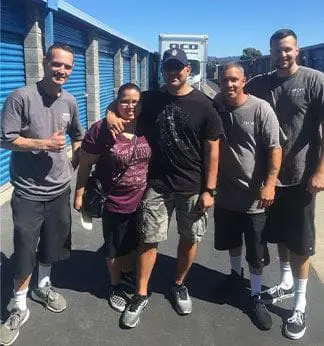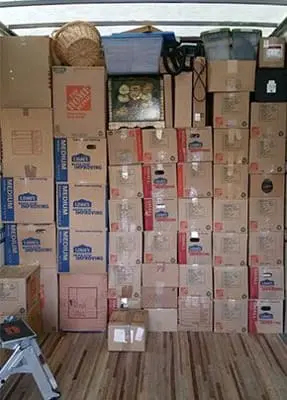Preparing for a Move: The Ultimate Guide
April 9, 2024 moving
Are you getting ready for a big move? Moving can be a stressful and overwhelming process, but with the right preparation, it can go smoothly. In this guide, we will provide you with step-by-step instructions on how to prepare for a move. From deciding what to keep to organizing your items for the moving company, we’ve got you covered. Let’s get started on how to prepare for a move.
Deciding What to Keep for the Move
Embarking on the journey of deciding what to keep for your move is a critical step in the preparation process. It requires thoughtful consideration and sometimes, a bit of emotional detachment. Start by surveying each room in your current home, categorizing items into ‘must-haves’, ‘maybes’, and ‘can live without’. For larger households, it might be helpful to tackle one room at a time to avoid feeling overwhelmed.
As you sort through your possessions, ask yourself a series of questions to aid in the decision-making process. Have you used the item in the last year? Does it hold significant sentimental value? Is it something that will fit comfortably and serve a purpose in your new space? Remember, moving offers a unique opportunity to streamline your belongings and only carry forward items that add value to your life.
For items that are still in good condition but no longer needed, consider selling or donating them. Selling items through online marketplaces or garage sales can provide extra funds for your move. Alternatively, donating to local charities or thrift stores can give your belongings a second life and support your community. Items that are broken or beyond repair should be responsibly disposed of or recycled.
As you finalize your list of items to keep, consider creating an inventory. This list can be invaluable for tracking your belongings throughout the move and ensuring everything arrives at your new home. This step, though seemingly mundane, sets the foundation for a more organized and efficient moving process, allowing you to approach the move with confidence and a sense of control.
Throwing Out Items You Are Not Going to Keep
Embarking on the process of decluttering before a move is an essential step that can significantly reduce stress and simplify the transition. As you sift through your belongings to determine what will accompany you to your new home, you’ll inevitably encounter items that no longer serve a purpose in your life. It’s crucial to approach this purge with a systematic method to ensure nothing essential is discarded and that the process is as efficient as possible.
Start by creating separate piles or using bins to sort items into categories such as ‘to donate’, ‘to sell’, and ‘to discard’. For many, this part of the preparation can be emotionally challenging, especially when parting with items that have sentimental value but lack practical use. Be honest with yourself about the utility and emotional weight of each item, and remember that letting go can pave the way for new experiences and a clutter-free living environment.
For items that are gently used but no longer wanted or needed, consider donating them to local charities, shelters, or non-profit organizations. This not only clears space but also contributes positively to the community. Additionally, selling items through online marketplaces or organizing a yard sale can be a great way to declutter while potentially earning some extra money for the move.
For items that are broken or beyond repair, look into local recycling options. Many communities offer recycling programs for electronics, furniture, and other household items. Ensuring that these items are disposed of responsibly helps minimize environmental impact.
Finally, as you work through the decluttering process, keep a detailed list or take photographs of items you’re letting go of, especially if you’re donating them. This documentation can be useful for reference or for tax deduction purposes if you are donating to a qualified charitable organization.
By systematically sorting and decluttering your possessions, you’ll not only lighten your load for the move but also start your journey in your new space with only the items that truly matter.
Scheduling a Time with the OCD Moving Services
Once you have decluttered and identified what you will be taking with you, the next pivotal step in your moving process involves securing a moving service. When it comes to selecting a company, thorough research is paramount to ensure that the service you choose aligns with both your logistical needs and budget constraints.
Initiate contact with OCD Moving Services within eight weeks of your planned move date. It is advisable to reach out to them as soon as you have a rough idea of your moving timeline. This not only increases the likelihood of securing your preferred moving date but also provides ample time for any preliminary arrangements that need to be made, such as obtaining packing materials or scheduling an in-home estimate if required.
Communication with your chosen moving service should be clear and concise. Be prepared to discuss the volume and nature of the items you intend to move, highlighting any that may necessitate special handling or packaging. If you have specific expectations or scheduling constraints, this is the time to mention them. A detailed conversation at this stage can help in customizing the service to your needs, ensuring a smoother transition.
Organizing Your Items for the Moving Company
Organizing your belongings effectively is crucial to ensure a smooth moving process. Once you’ve decided what items are making the move with you, it’s time to start preparing them for the moving company. A well-organized effort not only aids the movers but also provides you with peace of mind.
Start by acquiring quality packing materials. Boxes, packing tape, bubble wrap, and markers will be essential. Packing items room-by-room can keep the process organized and manageable. As you pack, label each box clearly with its contents and the room it’s destined for in your new home. Utilize color-coded labels or stickers for an added layer of organization, making it easier for movers to place boxes in the correct rooms upon arrival.
For items that are particularly fragile or valuable, consider packing them separately and indicate clearly on the box that the contents are fragile. It might also be beneficial to create a detailed inventory of these items, including photos and descriptions, which can be shared with the moving company. This ensures that both you and the movers are aware of the importance of these items and can take extra care during the move.
Disassemble any large furniture pieces that can be broken down. This not only saves space but also makes it easier for movers to transport these items. Keep all screws, bolts, and small parts in labeled bags so they can be easily reassembled later.
Lastly, set aside a box or two for essential items you’ll need immediately upon arrival at your new home, such as toiletries, a change of clothes, and basic kitchen items. Mark these as “open first” so you can easily access them without having to search through numerous boxes.
By following these steps, you ensure your belongings are well-prepared for the moving company, facilitating a smoother and more efficient moving day.
Steps To Take If You Are Moving Out of State
Moving out of state introduces additional considerations into the already complex process of relocation. Firstly, research and comply with any specific regulations or requirements for interstate moves, which might include vehicle registrations and driver’s license updates in your new state. Engaging with a moving company experienced in long-distance relocations, like OCD Moving Services, becomes even more critical. Ensure they are licensed for interstate moves and inquire about their policies on tracking your belongings during transit for added peace of mind.
It’s also advisable to plan for a personal travel itinerary that synchronizes with the moving schedule. This includes arranging accommodations if the journey spans several days and preparing an essentials kit for the road. Given the distance, ensure your important documents, such as leases or purchase agreements for your new home, identification, and other critical paperwork, are readily accessible.
Lastly, consider the timing of your move. Interstate relocations can be affected by seasonal weather conditions, so aim for a moving date that avoids extreme weather, if possible. By taking these steps, you’ll navigate the complexities of an out-of-state move with greater ease and efficiency, setting the stage for a successful transition to your new home.






